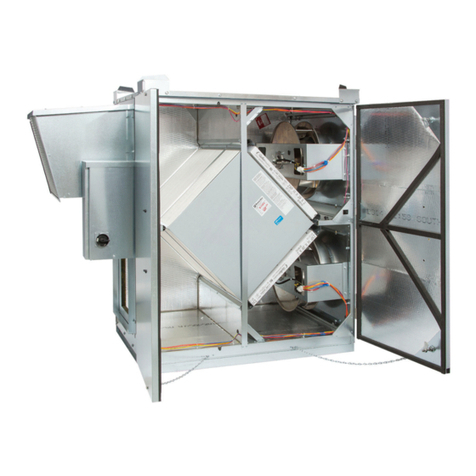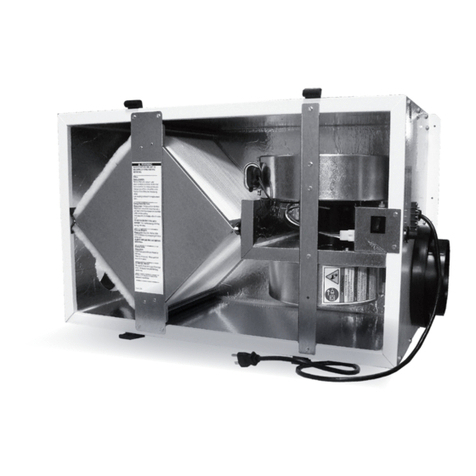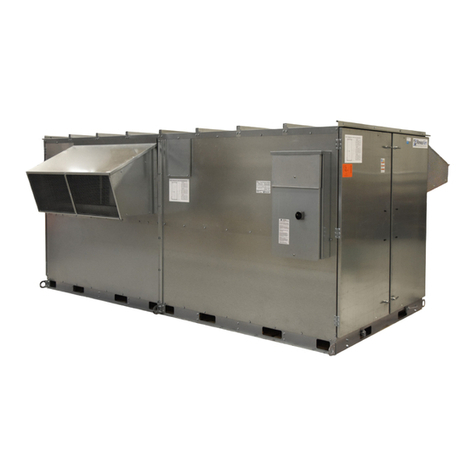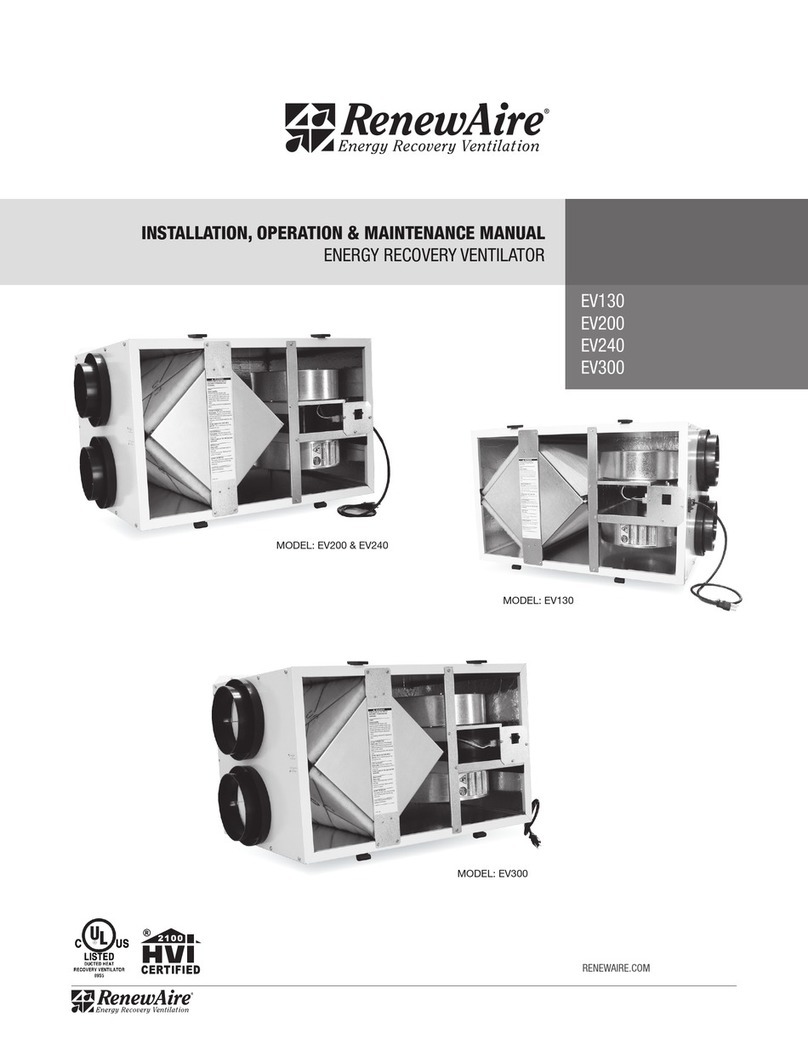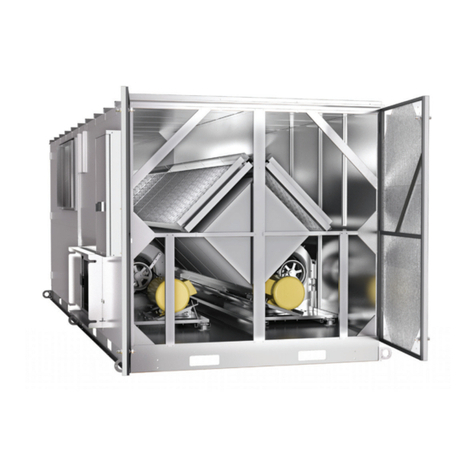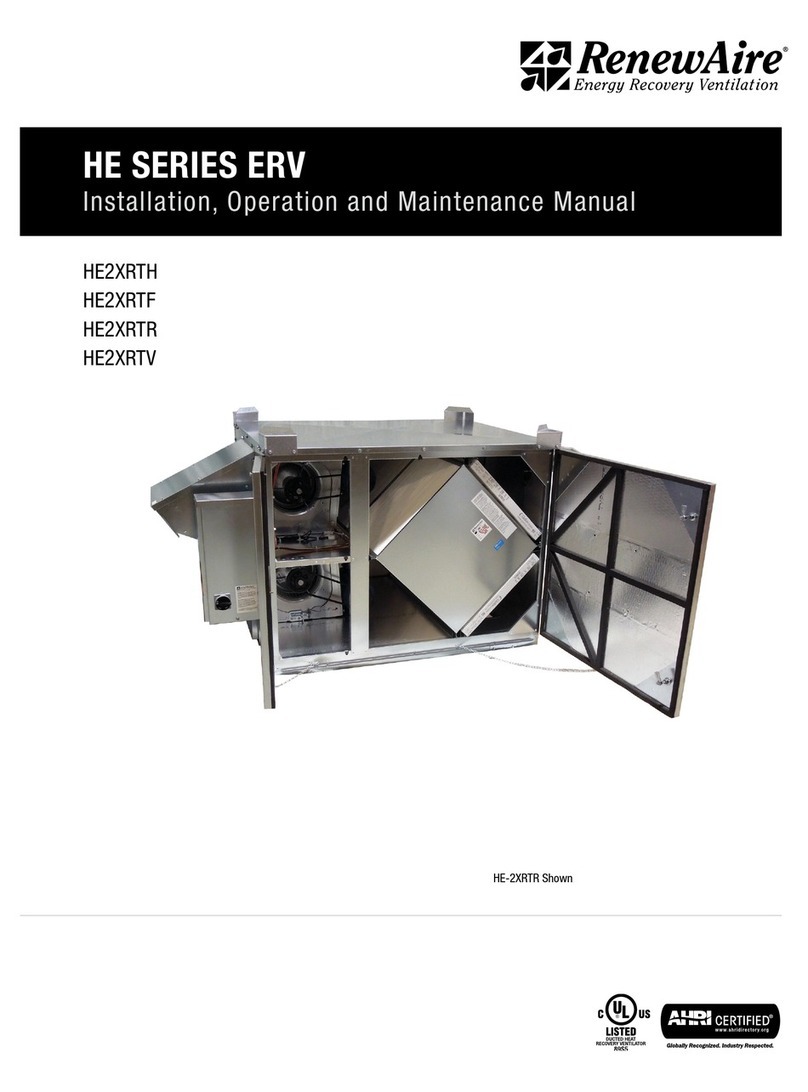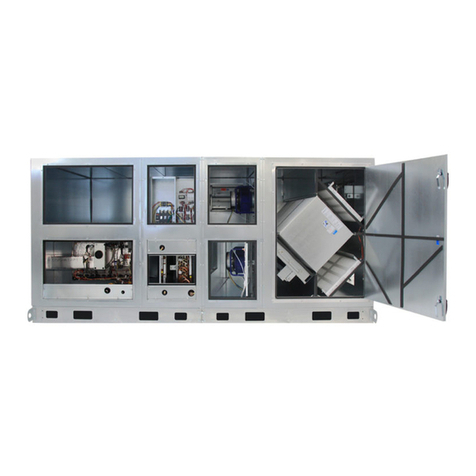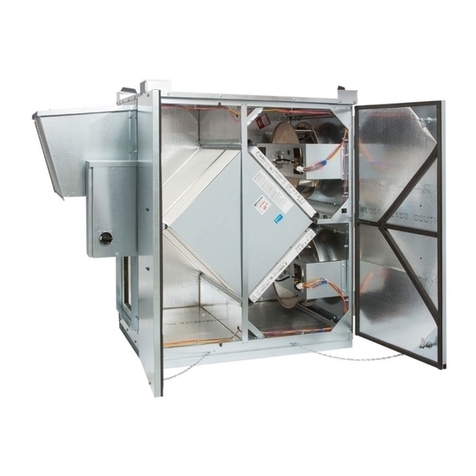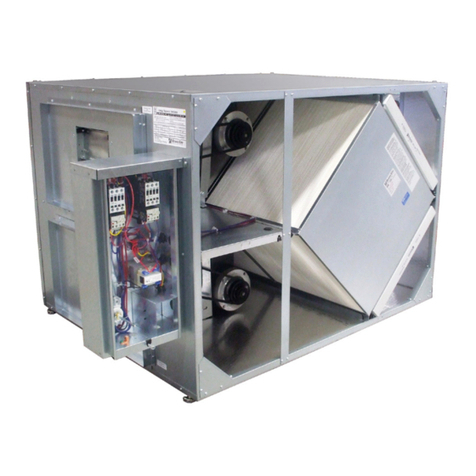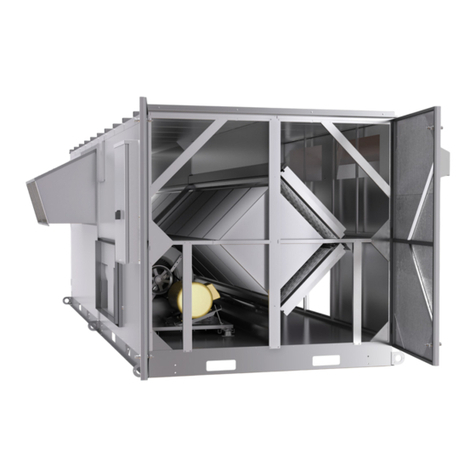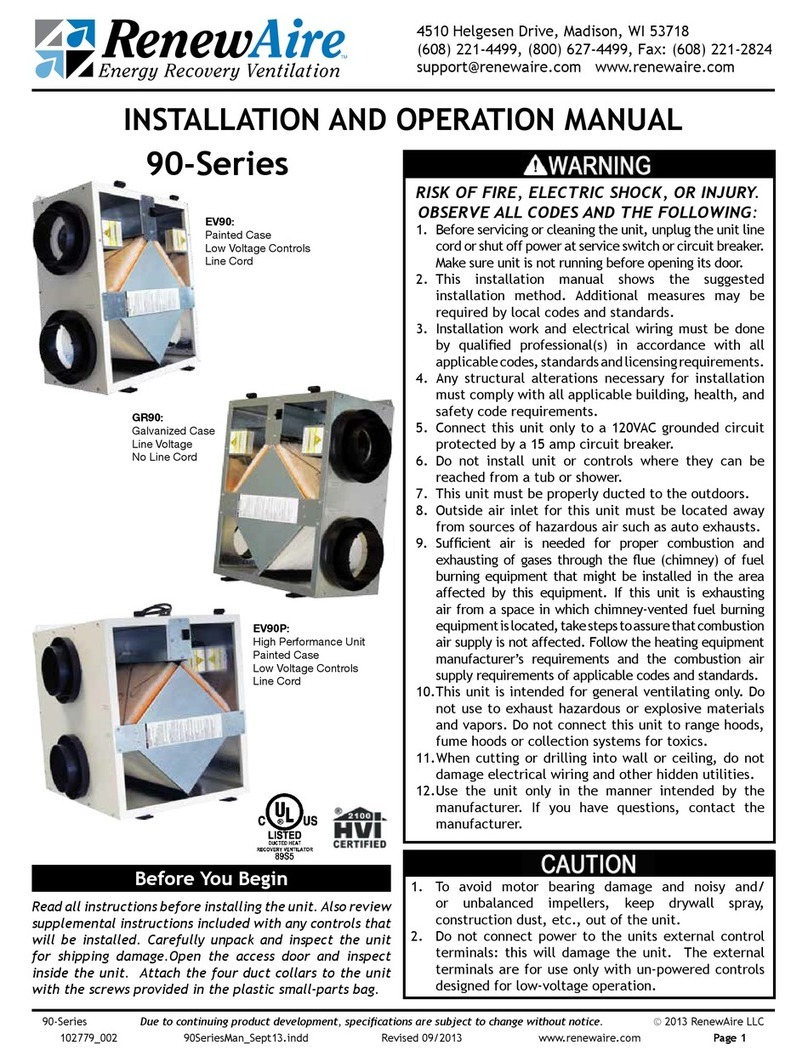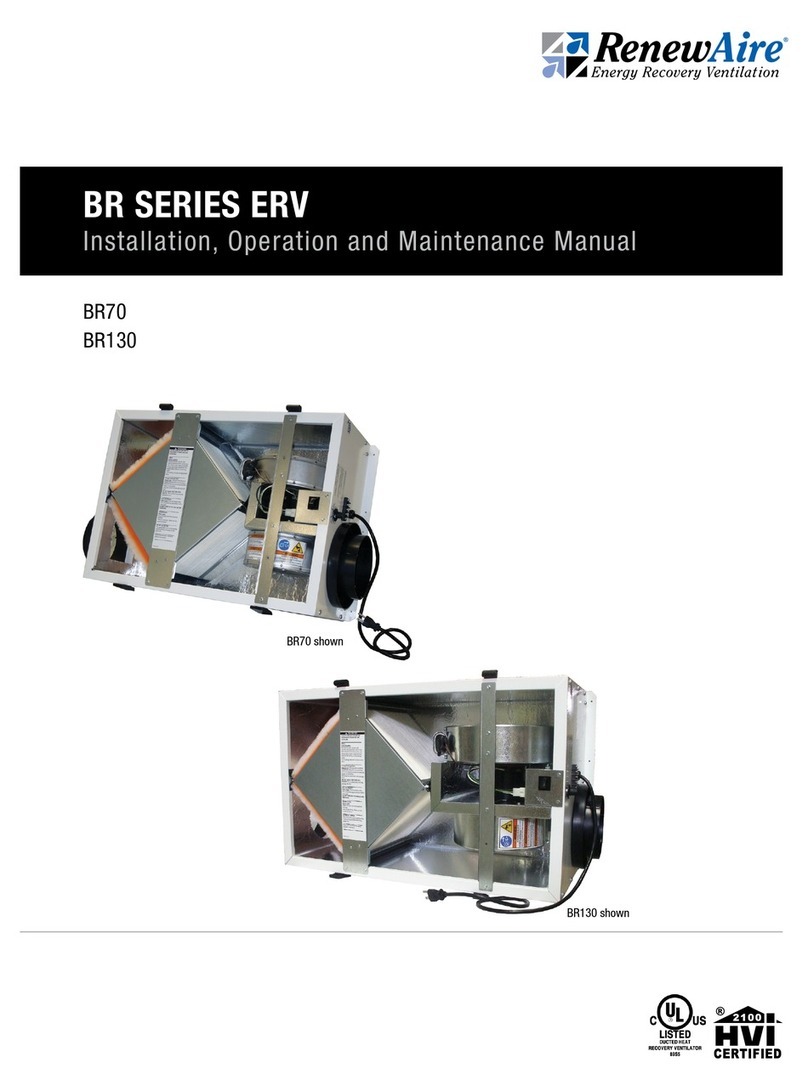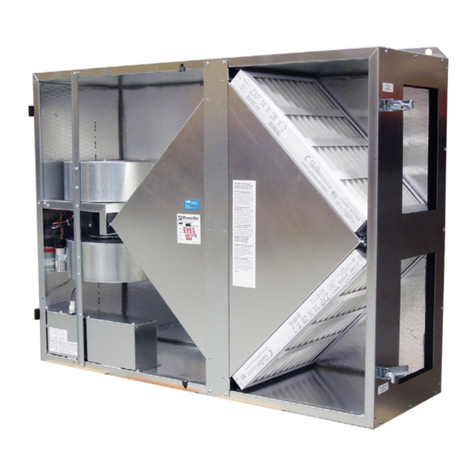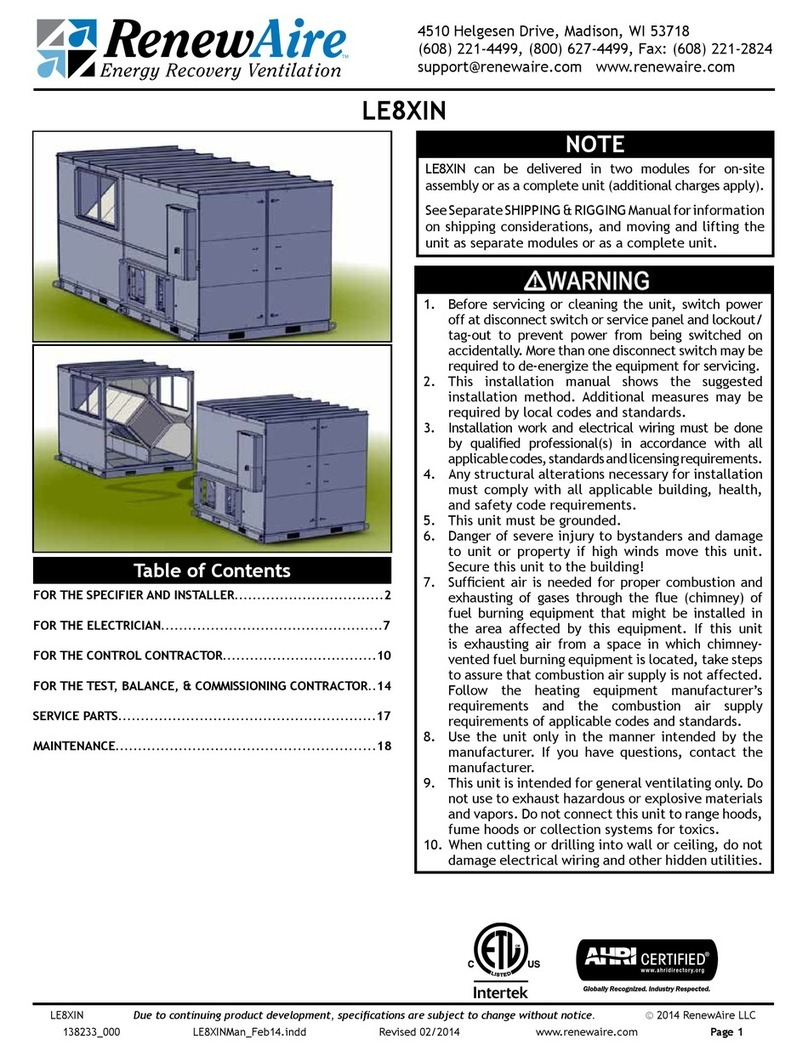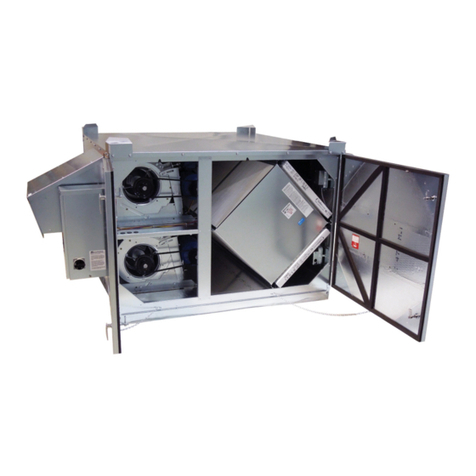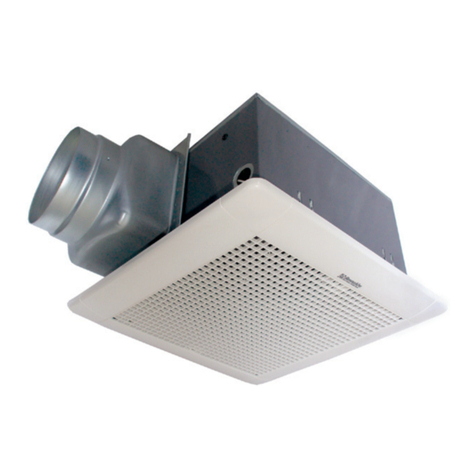
© 2008 RenewAire LLC Due to continuing product development, specifications are subject to change without notice.
For Technical Updates and other current info, visit www.breeze.renewaire.com
BR70_130_Manual_FEB08.doc. 140036_003 Revised 2/08 3
4510 Helgesen Drive, Madison, WI, 53718
608.221.4499, 800.627.4499, Fax: 608.221.2824
Mount the unit hanging bracket to the unit. Attach the
hanging bracket to the duct work. Make sure the unit
orientation provides for proper airflow direction in the return
duct. Refer to the air flow direction label on the unit. Using
the template provided cut a rectangular hole in the duct work.
To add rigidity to the duct, bend the edges of the hole into the
duct as flanges. Check the gasket on the back of the unit to
insure it is free of tears and rips. Add the long piece of gasket
provided in the hardware kit to the back of the unit to form a
rectangle with the other three pieces of gasket already applied.
Lift the unit and connect the hanging bracket on the unit into
the hanging bracket on the duct work. Use caution and an
assistant when installing the unit overhead. Swing the unit
into position and verify its fit. Attach the unit end flanges to
the duct work. Now fasten the crosswise bracket to the duct
work and then to the unit. The smaller crosswise bracket may
need to be installed after the lengthwise bracket if one of the
unit flanges cannot be attached to the return duct. Make sure
the screws used are properly selected for the loads and
substrate involve.
Note: All the provided brackets should be installed
surrounding the opening between the unit and return duct.
Exhaust & Outside Air Ducts
The Exhaust Air Duct and the Outside Air Duct connect the
unit to the outside. Flexible insulated duct is typically used.
For duct hung applications, the exhaust outlet and fresh air
inlet on the outside of the building should be at least ten feet
apart to avoid cross-contamination. Keep the length of the two
flexible ducts roughly equal and as short and straight as
possible. Normally, six inch insulated flexible duct is used.
Band or tape inner duct liner to inner flange of appropriate
collar. Drive a sheet metal screw through liner to secure duct
spiral wire to collar. Straighten insulation, and slide outer
duct jacket onto the outer flange of the duct collar. Secure
with band or tape.
If duct runs are exceedingly long (over 10 feet of flex duct for
130 CFM) or have excessive bends or elbows or if maximum
air flow rates are required, eight inch insulated flexible duct
should be used. The outer flange of the duct collar can be
used for both the inner and outer jacket of the flexible duct.
Care must be taken to insure that the duct is securely fastened
and sealed to the duct collar. Ducts connecting the unit to the
outside must be insulated with sealed vapor barrier on both
inside and outside of the insulation.
The inlets and outlets should be screened against insects and
vermin and shielded from the weather to prevent the entry of
rain or snow. The exhaust outlet should not dump air into an
enclosed space or into any other structure.
Mounting the Unit Thru-Wall
As another installation option the Breeze unit may be mounted
directly to the inside of an exterior wall. The Thru-Wall kit
must be used for this application. Refer to Thru-Wall
instructions packed with the TW kit.
Mounting the Thru-Wall Kit
The Thru-Wall Kit, or TW, consists of two hoods, insulated
metal ducts, an interior mounting plate, and small air seal
gasket. See Figure 5. The interior plate is attached to the
interior of the wall. Using the holes in the plate as a reference
CAUTION
INSTALL FRESH AIR INLET AWAY FROM SOURCES OF
CONTAMINANTS.
♦Do not locate the fresh air inlet where vehicles may be
serviced or left idling.
♦The fresh air inlet should be at least ten feet away from
any exhaust such as dryer vents, chimneys, furnace, and
water heater exhausts or other sources of contamination or
carbon monoxide.
♦Never locate the fresh air inlet inside a structure.
Figure 3. Side-Hung
Figure 4. Return Drop Hung

